NOVEMBER 2, 2020 : Today was a tourist day, or as I called it, a non-Jew day. We did only activities that other tourists would do and took a break from Wandering Jew.
Our first destination was Vergina, a small town 15-minute drive south of Veria. Vergina is the site of ancient Aigai, the first capital of Macedon. It is where in 336 BCE, King Philip II was assassinated and his son, Alexander the Great, was proclaimed king. In 1977, the burial sites of several kings of Macedon were found there, including the tomb of Philip II. An archeological museum was built to house the artifacts found at the site.
Although this is a major tourist attraction, the museum was not well sign posted and hard-to-find. Even Google Maps took us in the wrong direction. We finally found what we thought was the entrance to the museum – but it ended up being the town hall. All the signs were only in Greek except for one that proclaimed “This is not the museum!”. I guess others were making the same mistake.
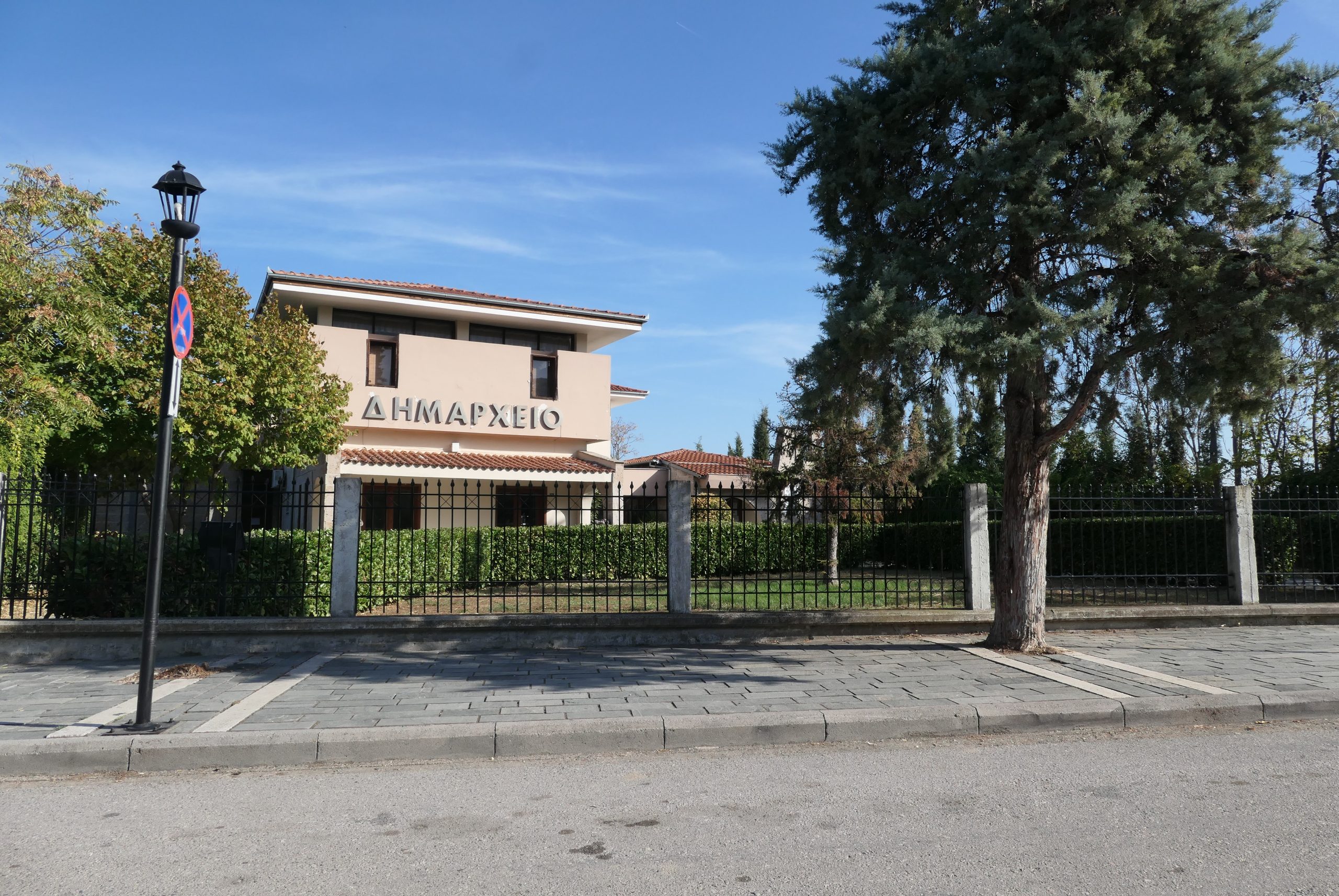
We finally found the correct place – down a pedestrian walkway full of souvenir shops. This was definitely the most tourist-centered place we have seen so far in Greece.
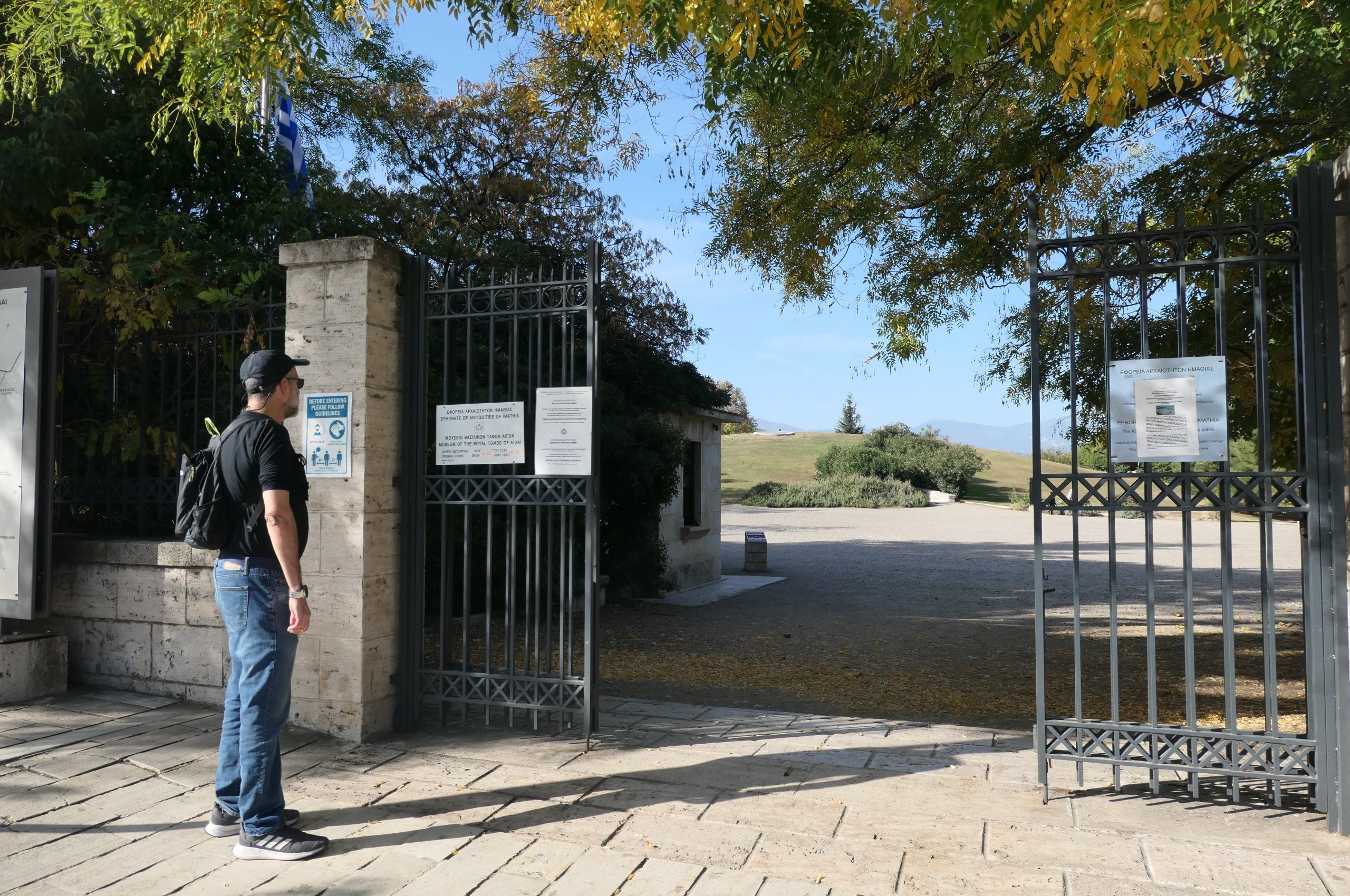
The museum is located underground, in a tumulus. A tumulus is a mound of earth and stones raised over a grave. It is also known as a burial mound. You enter the museum and it is all black and dark, to remind you of where you are. Your eyes need time to adjust.
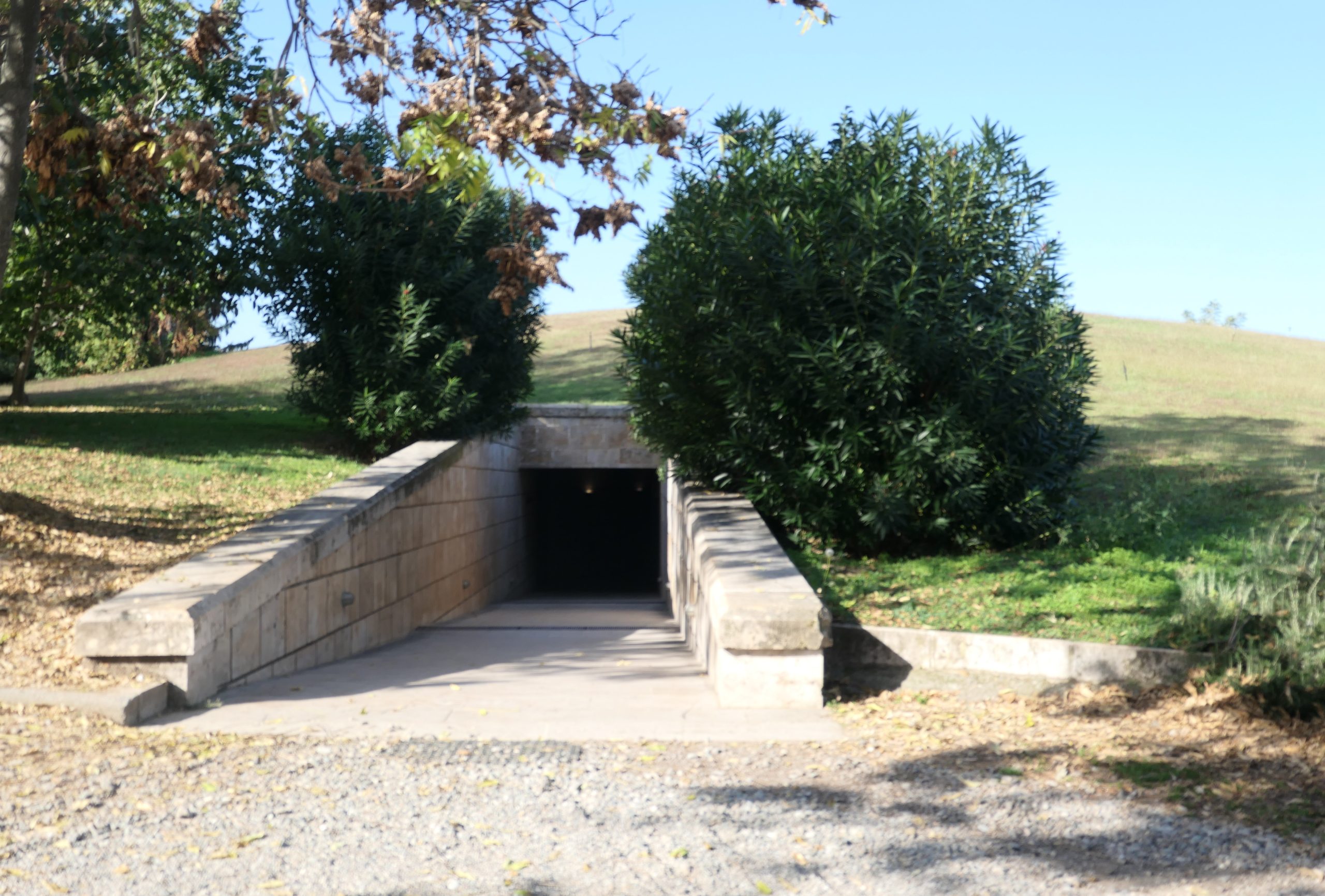
Our first stop in the museum was to watch a movie that told us about the history of the place. At his daughter’s wedding, King Phillip II showed up with a gift of 13 statues. They were 12 statues of gods, and the 13th was of himself. This was considered to be boastful, and the gods revenged. Within an hour, King Phillip was murdered during the wedding festivities. His son, Alexander the Great, then fulfilled his filial duties, and gave him a funeral worthy of a king.
Before burial, King Phillip II was burnt alongside his weapons, his ornaments, the vessels that were used to wash his body and were now considered unclean, and more. His favorite concubine, a young princess voluntarily burned with him, to be the only one to share his bed in the afterlife. She wore a golden wreath. The ashes were then placed in a golden urn in the shape of large box. This in turn was placed in a large tomb with two rooms. The tomb was then covered by earth creating a large mound – the tumulus. We were now in this tumulus.
All the items we saw in the introductory movie, were on display – the golden box with the ashes, the golden wreath, the burnt weapons, and more. It was very amazing – imagine being the archeologist (Manolis Andronikos) who discovered this 2300 years old tomb. As he said “It was astounding – too much for my mind to take in.”

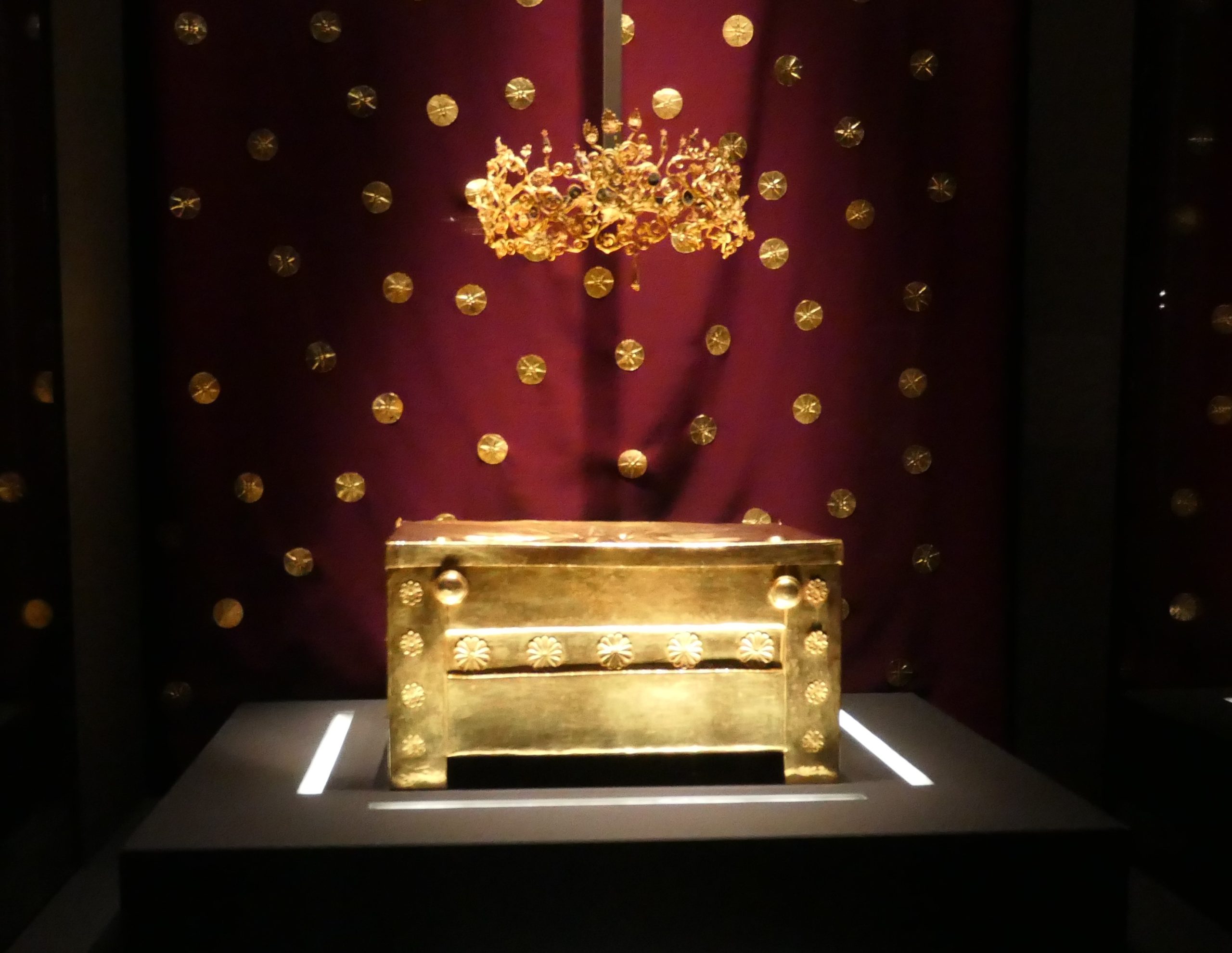
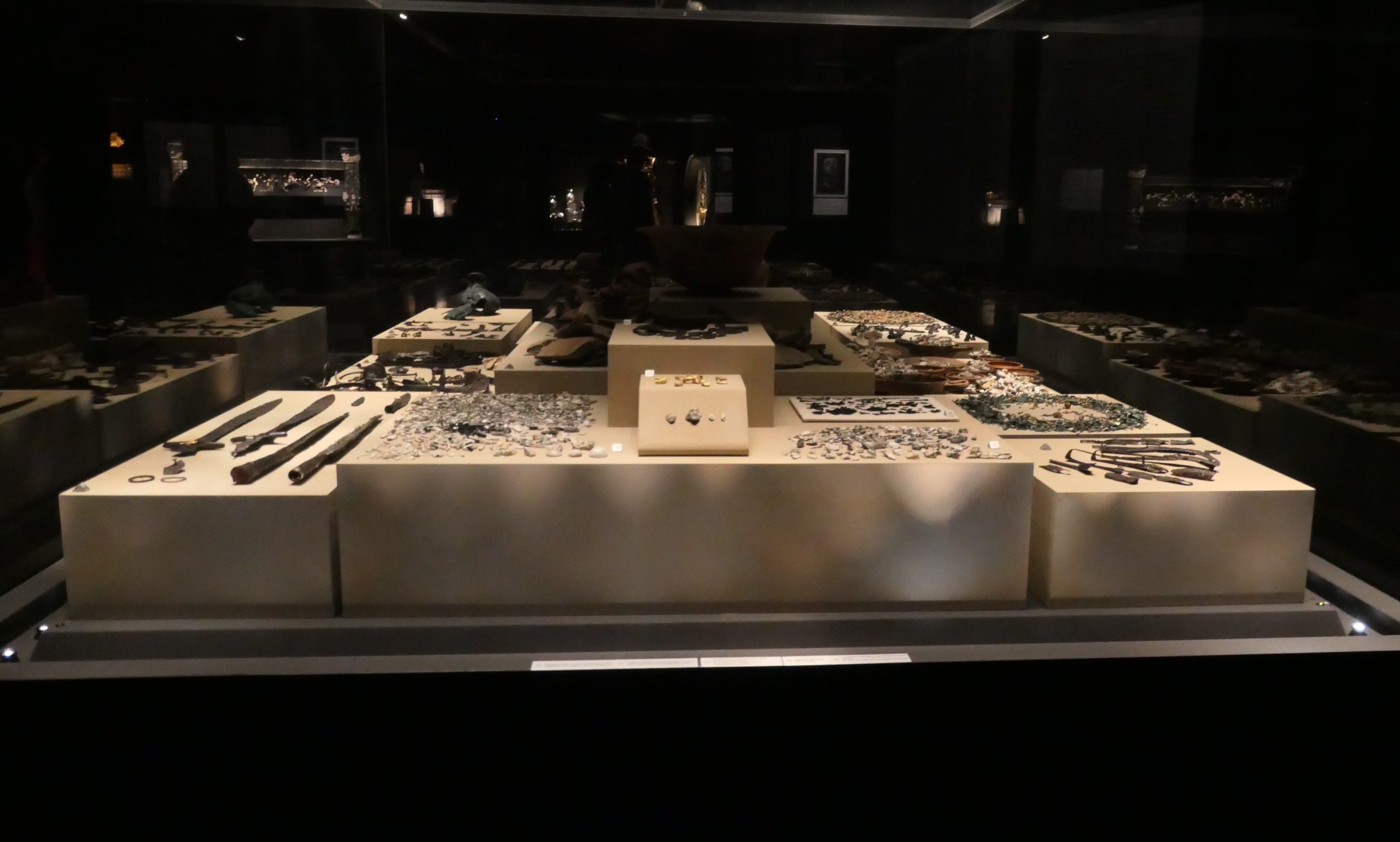
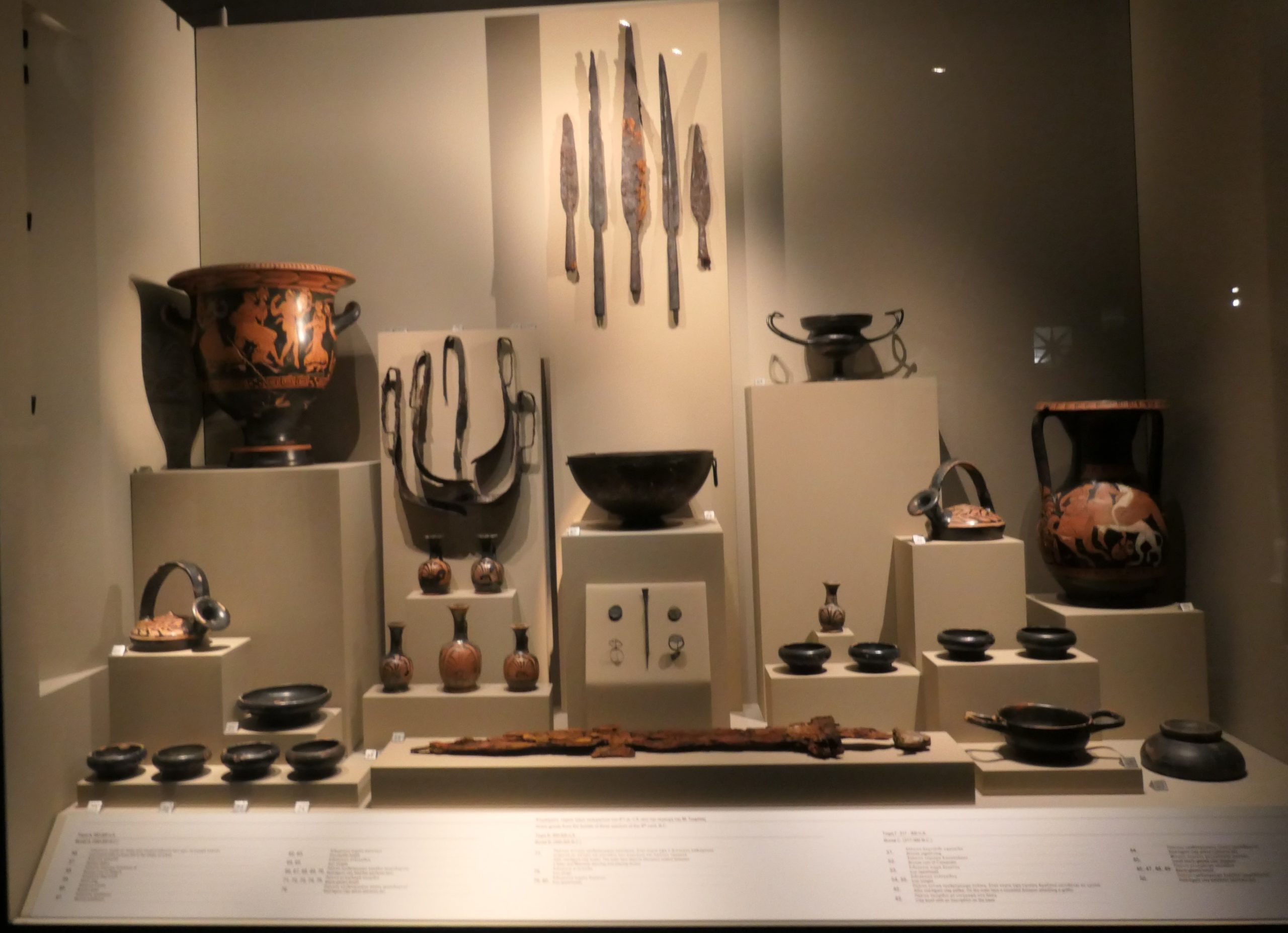
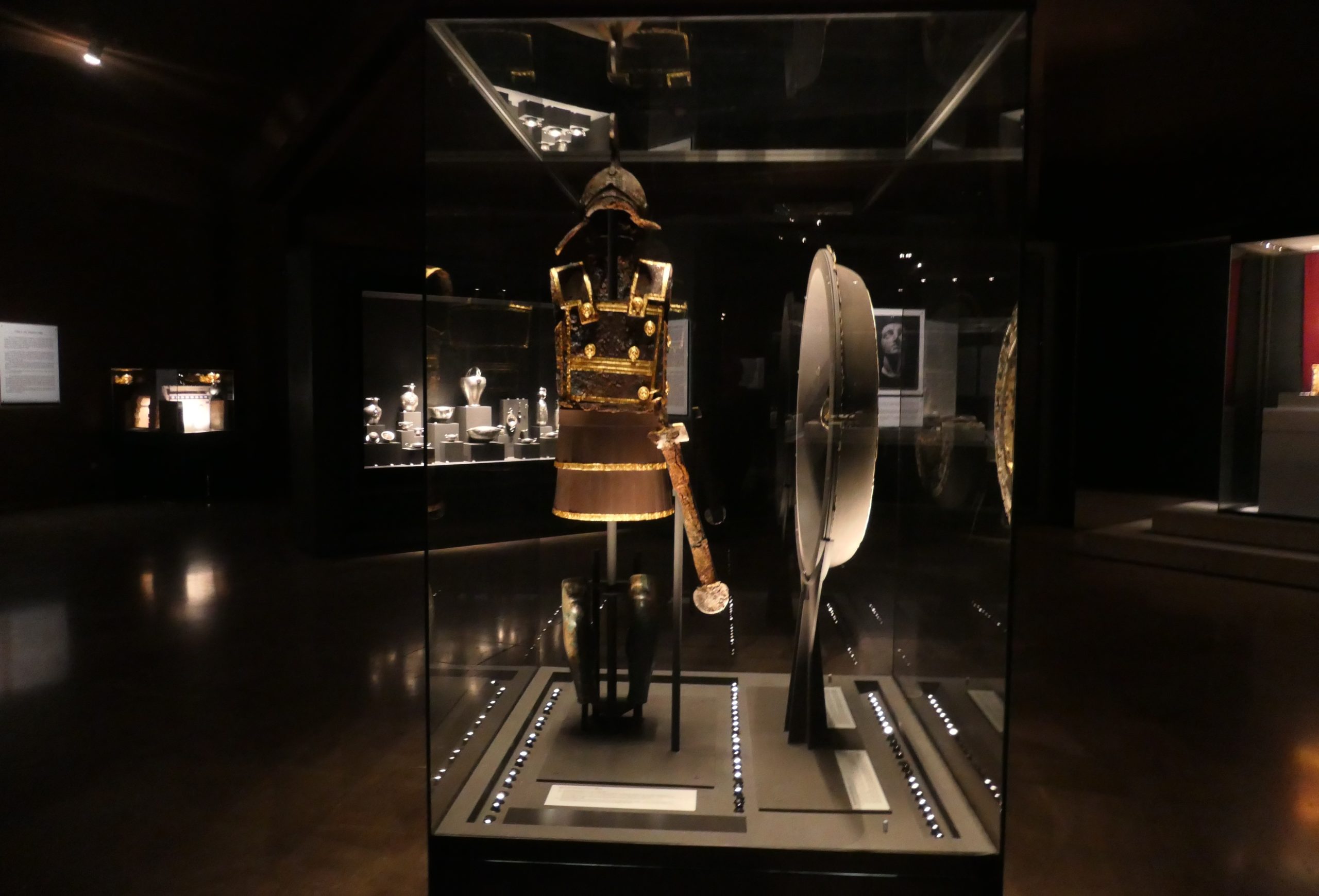
From there we drove toward Olympus National Park. Instead of the highway, we took small roads over the mountains. The fall colors were out and the scenery was spectacular. The rarely saw another car, only some hunters with long guns who had stopped along the road at one point.
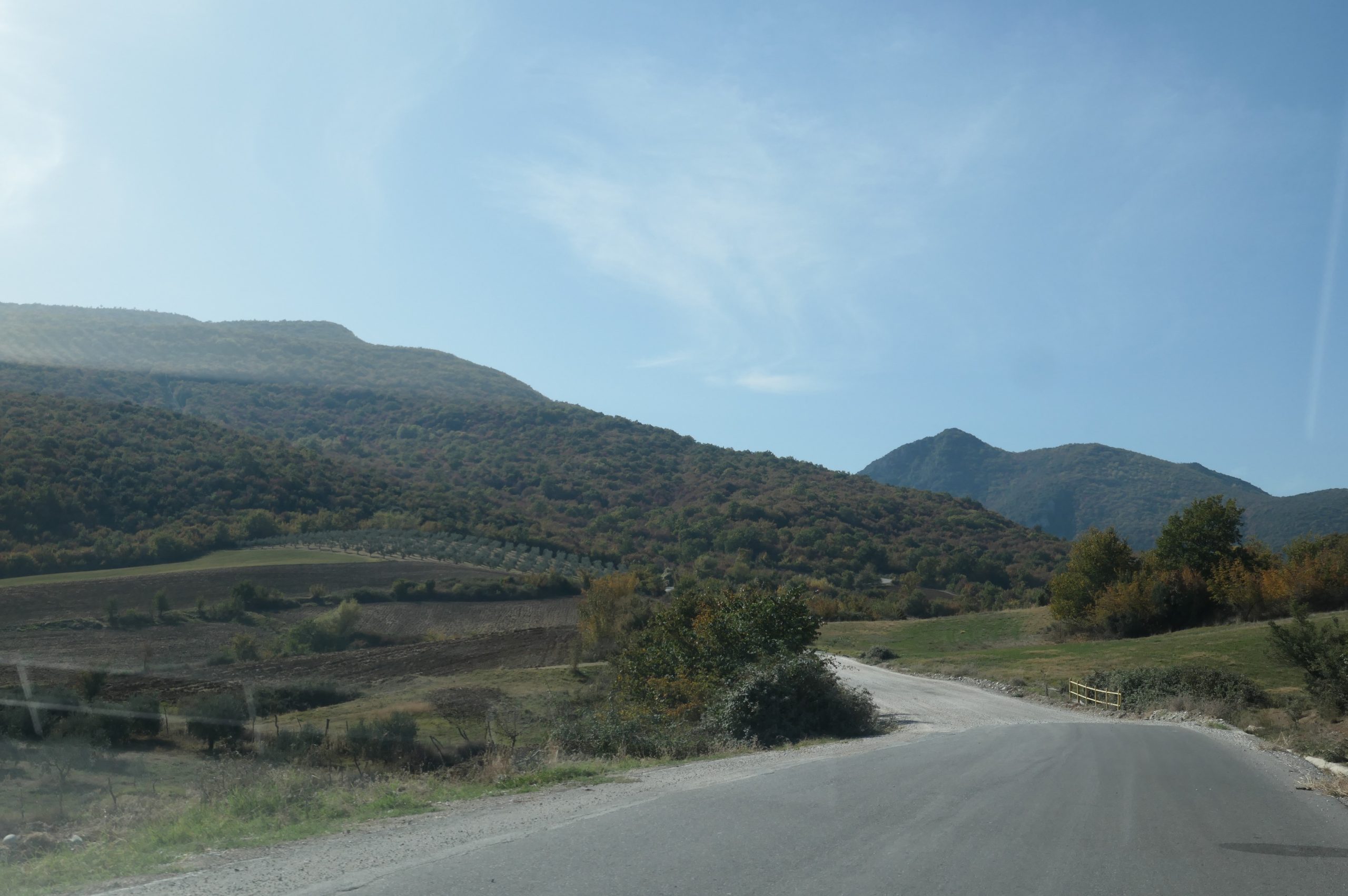

Mount Olypmus is the highest mountain in Greece. According to ancient Greek mythology, Mt Olympus was the home of the 12 gods. Today it is a National Park, with many hiking trails. At the foot of the mountain, is the town Litochoro . This is a tourist town for those visiting the mountain.
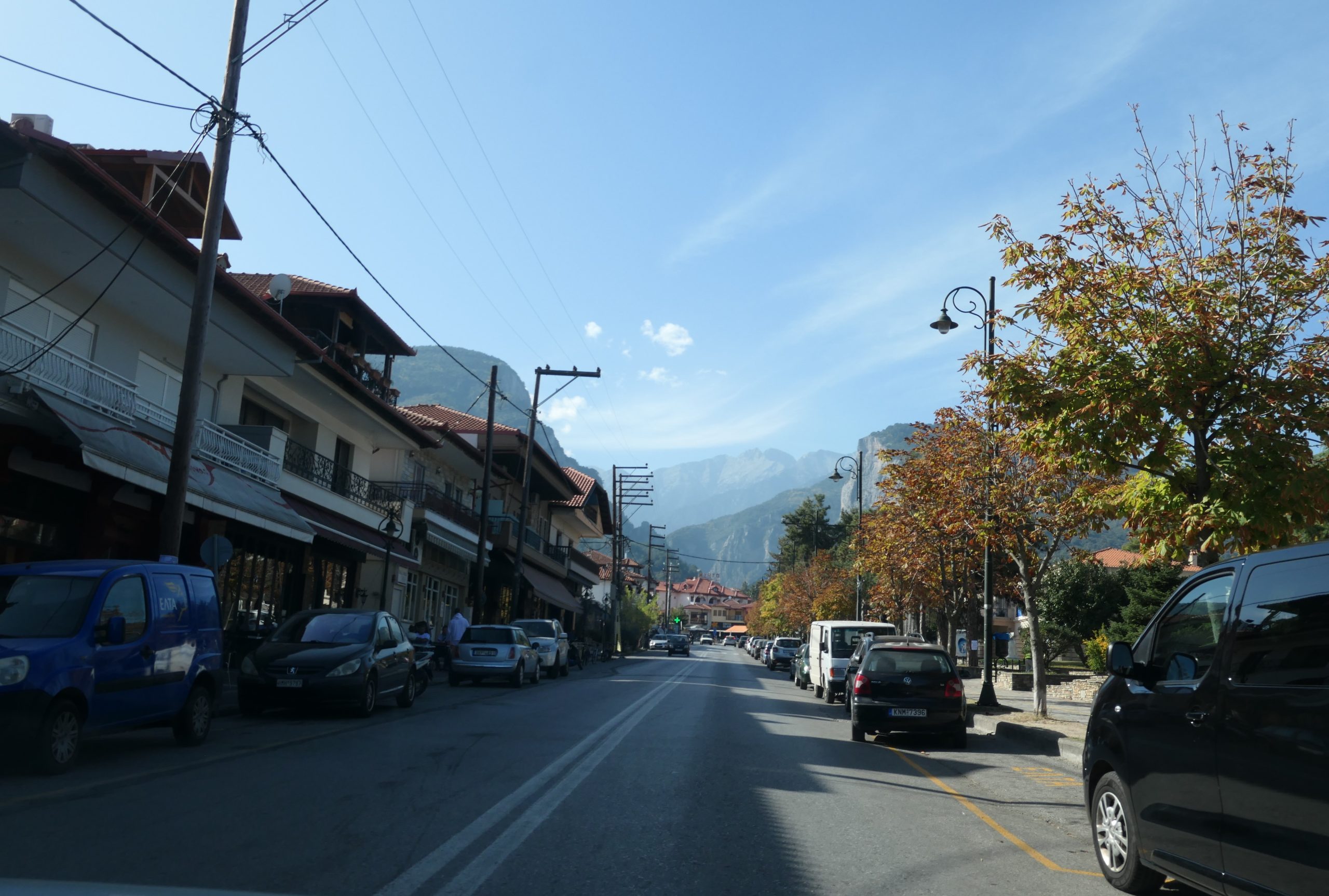
Our first stop was at the Mount Olympus Information Center in Litochoro. We asked about short, easy hikes in the park. The counter person suggested we drive to the Old Monastery of Agios Dionysios. From there, if we turn right, there is a 15-minute easy, flat trail to a waterfall, if we turn left, there is a 20- minute easy, flat trail to a cave. Sounded perfect, first the waterfall and then the cave. He had no maps to give us, so we took a photo of a general map of the area on the wall.

From Litochoro, there is one road that goes through the park and winds 17 kilometers up and around the mountain. More experienced and in-shape hikers then proceed from the end of the road and reach the summit on foot, a difficult climb. The monastery he suggested we go to, was 15 kilometers up the road.
Up and up we went. The views were beautiful. As we climbed higher, the trees changed from mostly deciduous to evergreen. About 2/3 of the way, we stopped at a picnic table and had our lunch. From there, I expected the road to continue upward, but instead we went mostly downhill until we reached the monastery. The monastery was one big construction site.
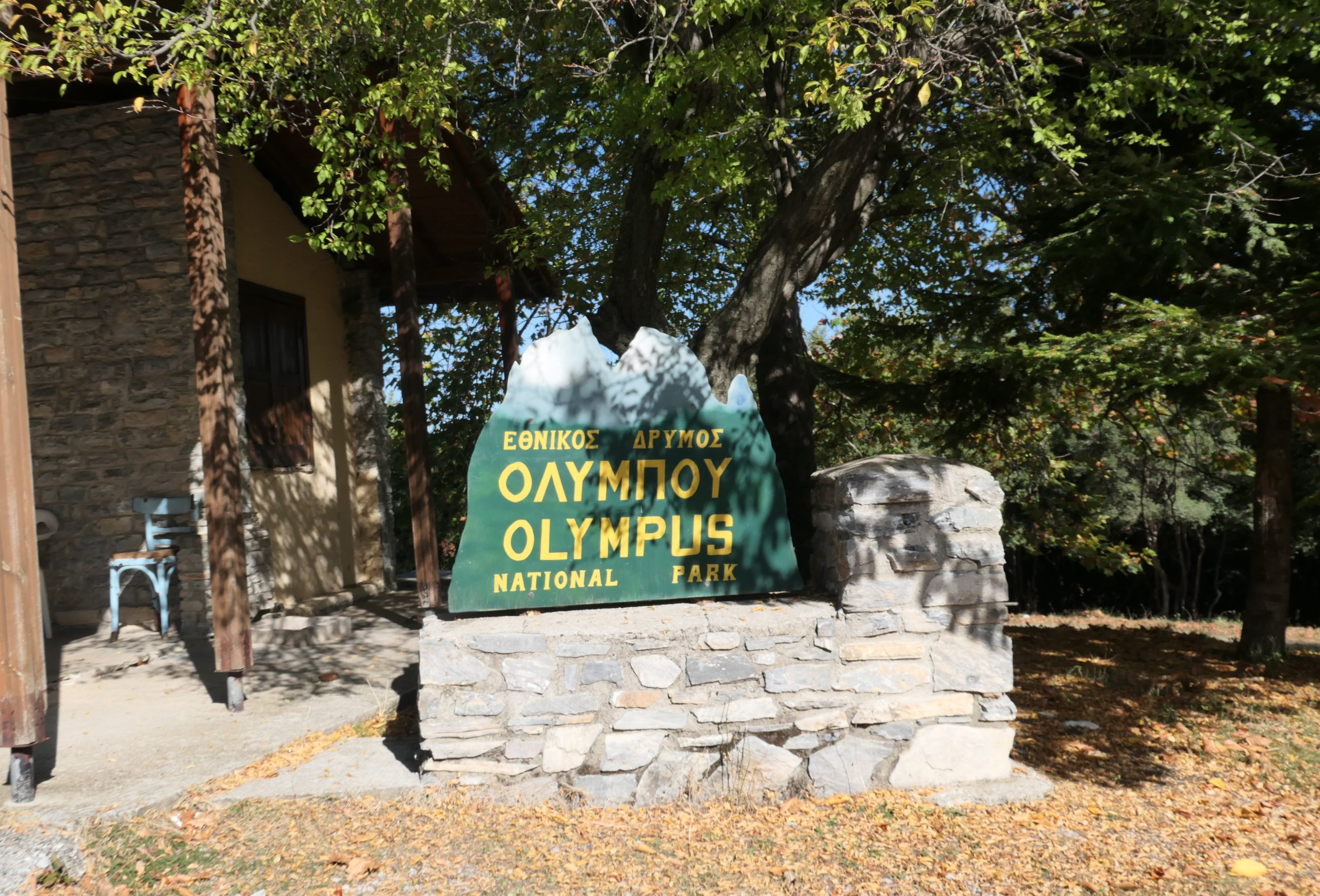
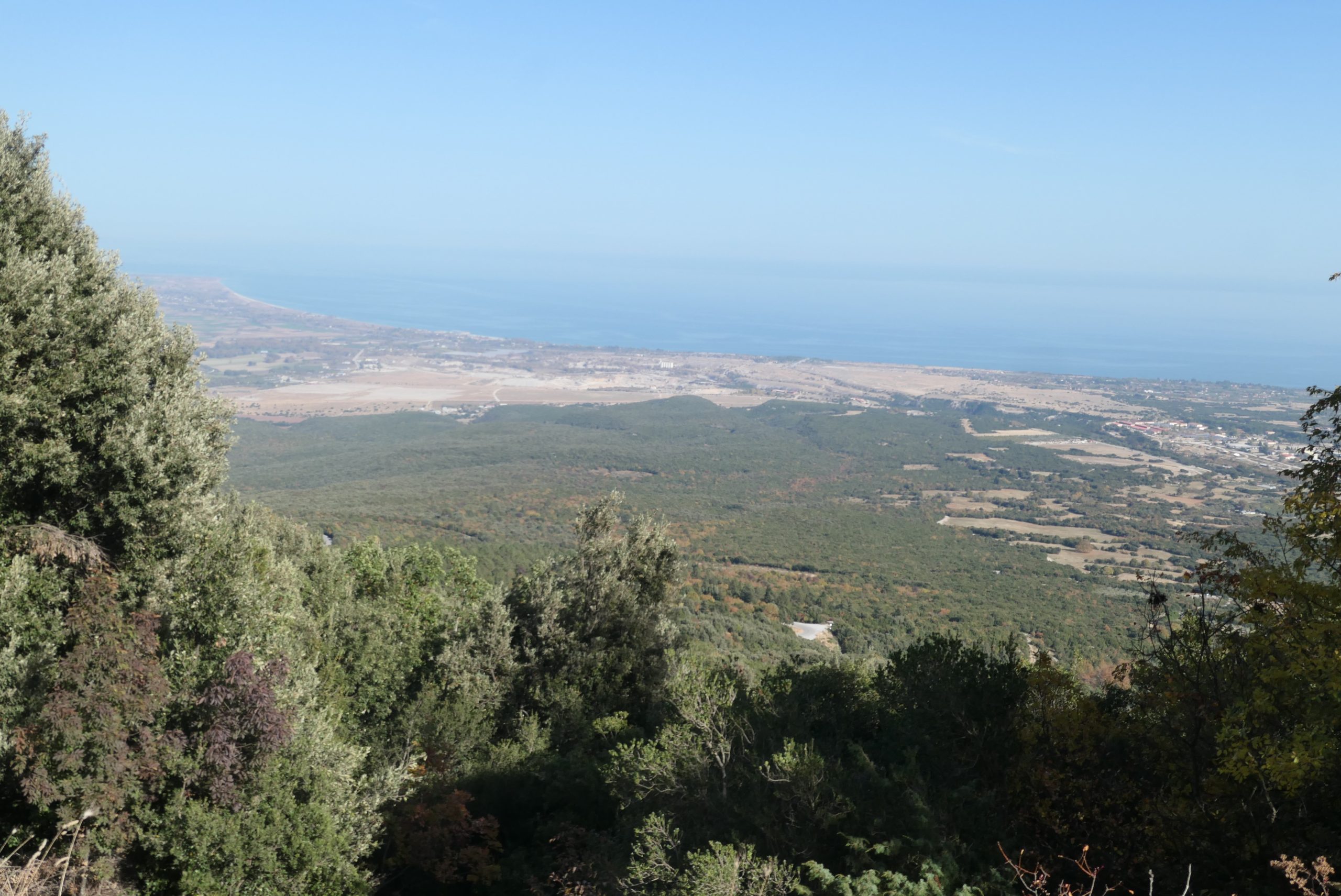
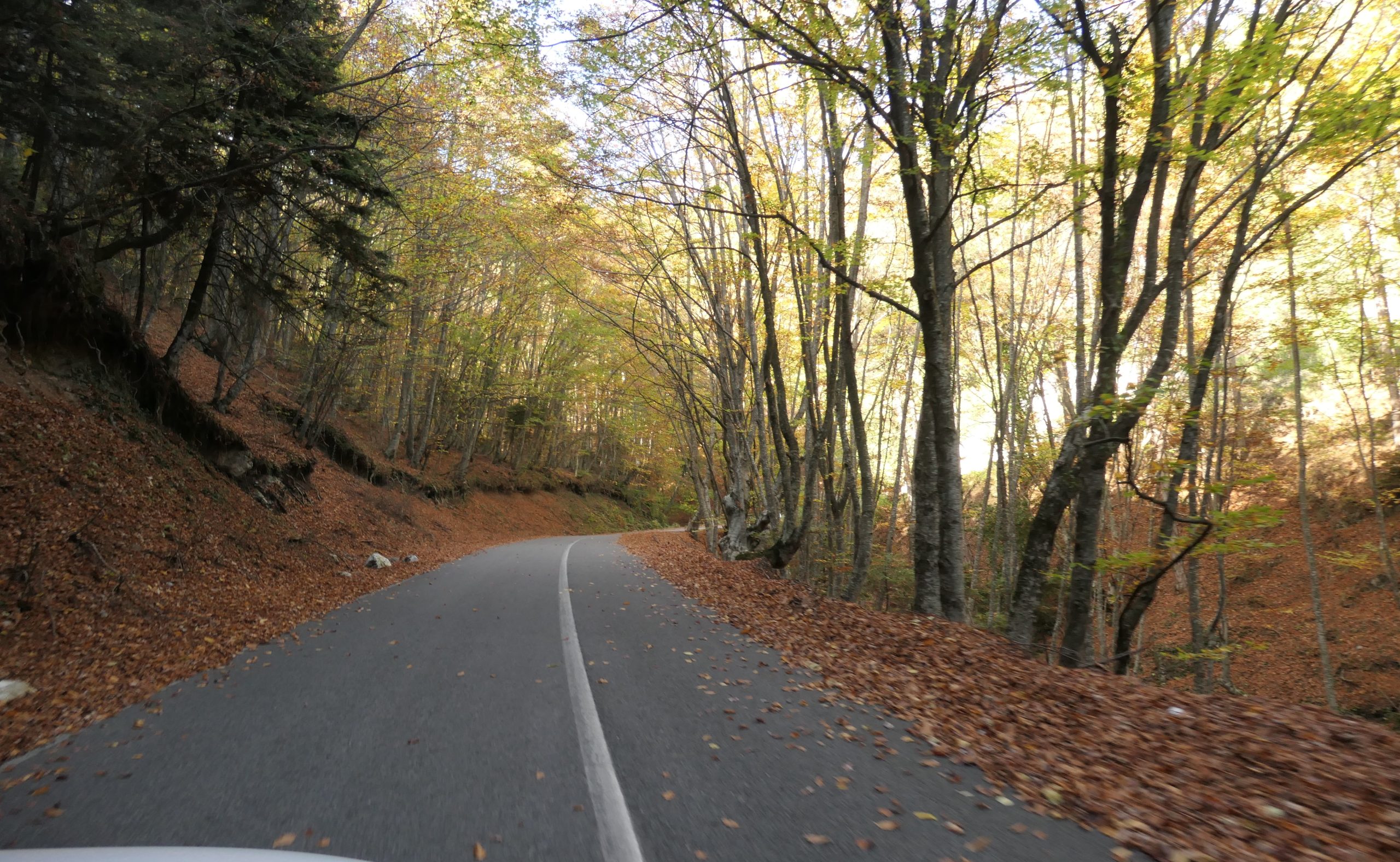
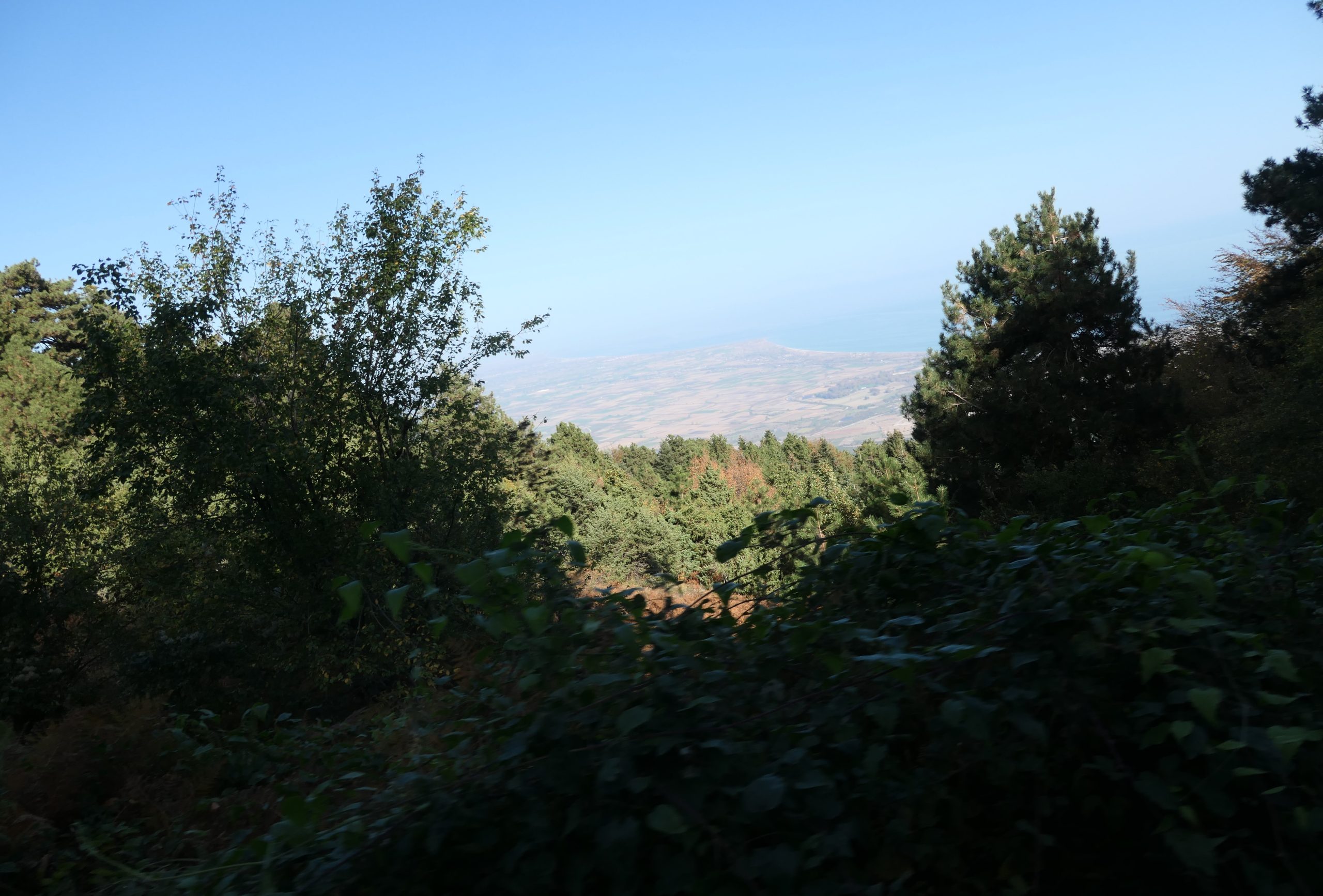
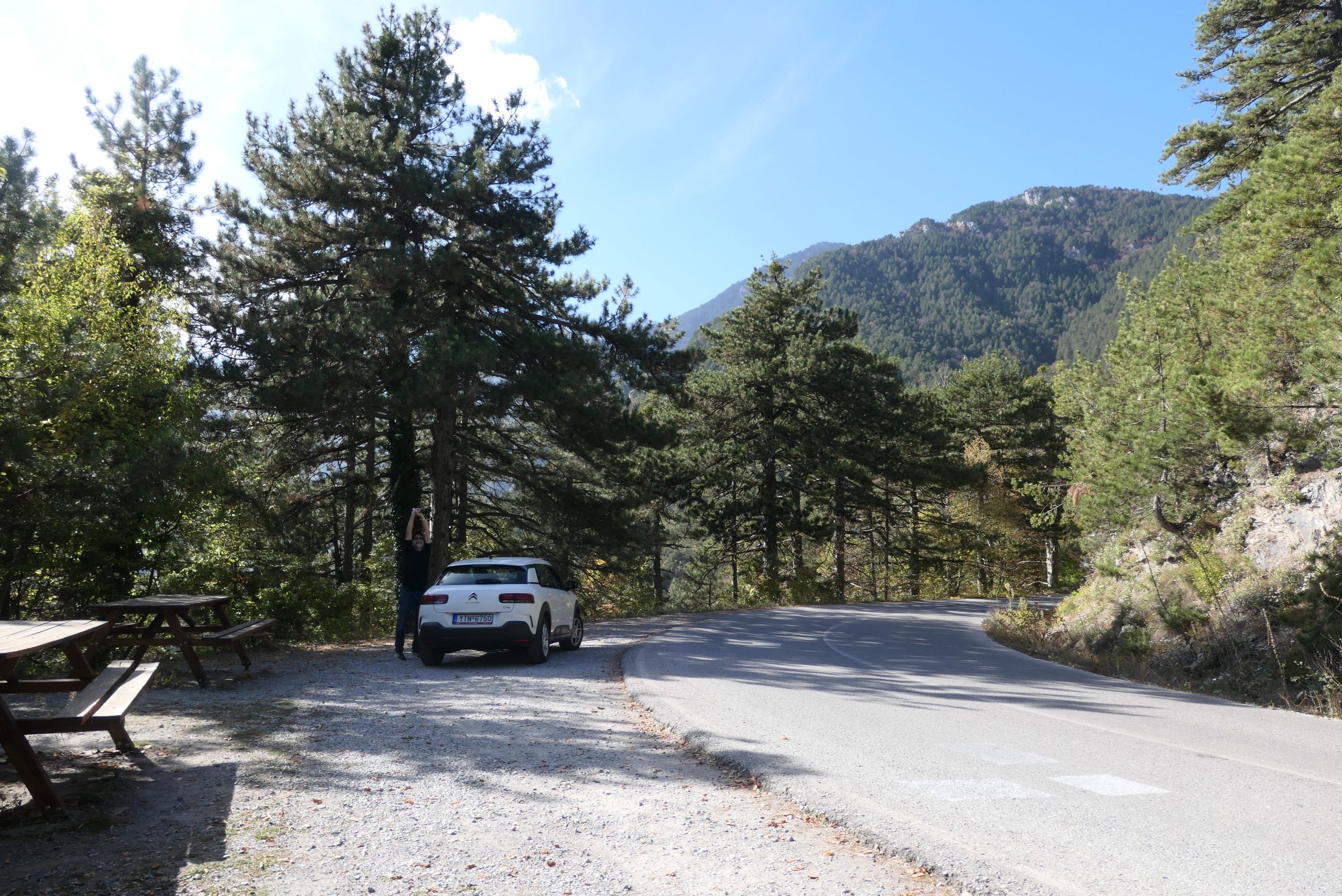
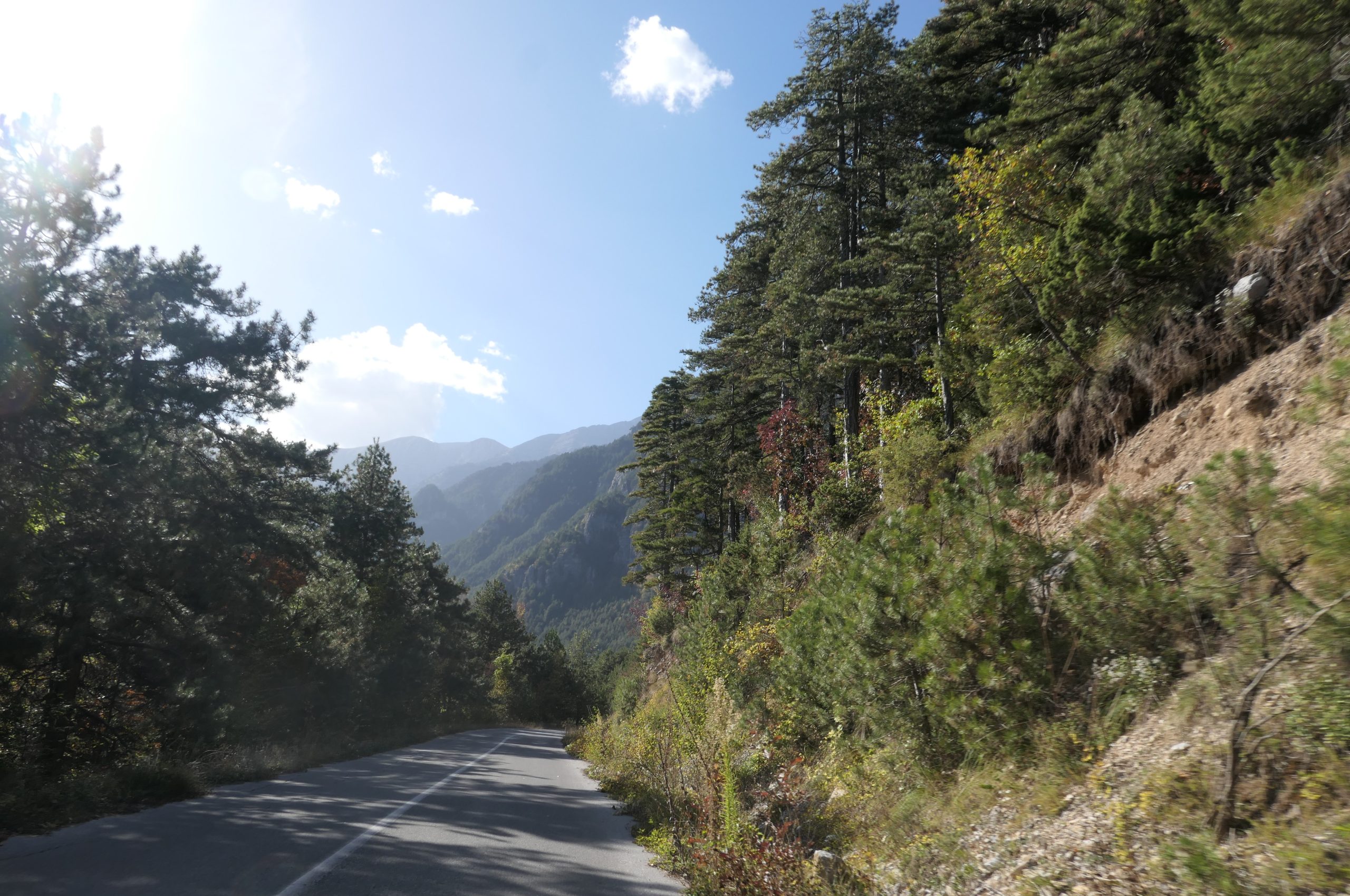

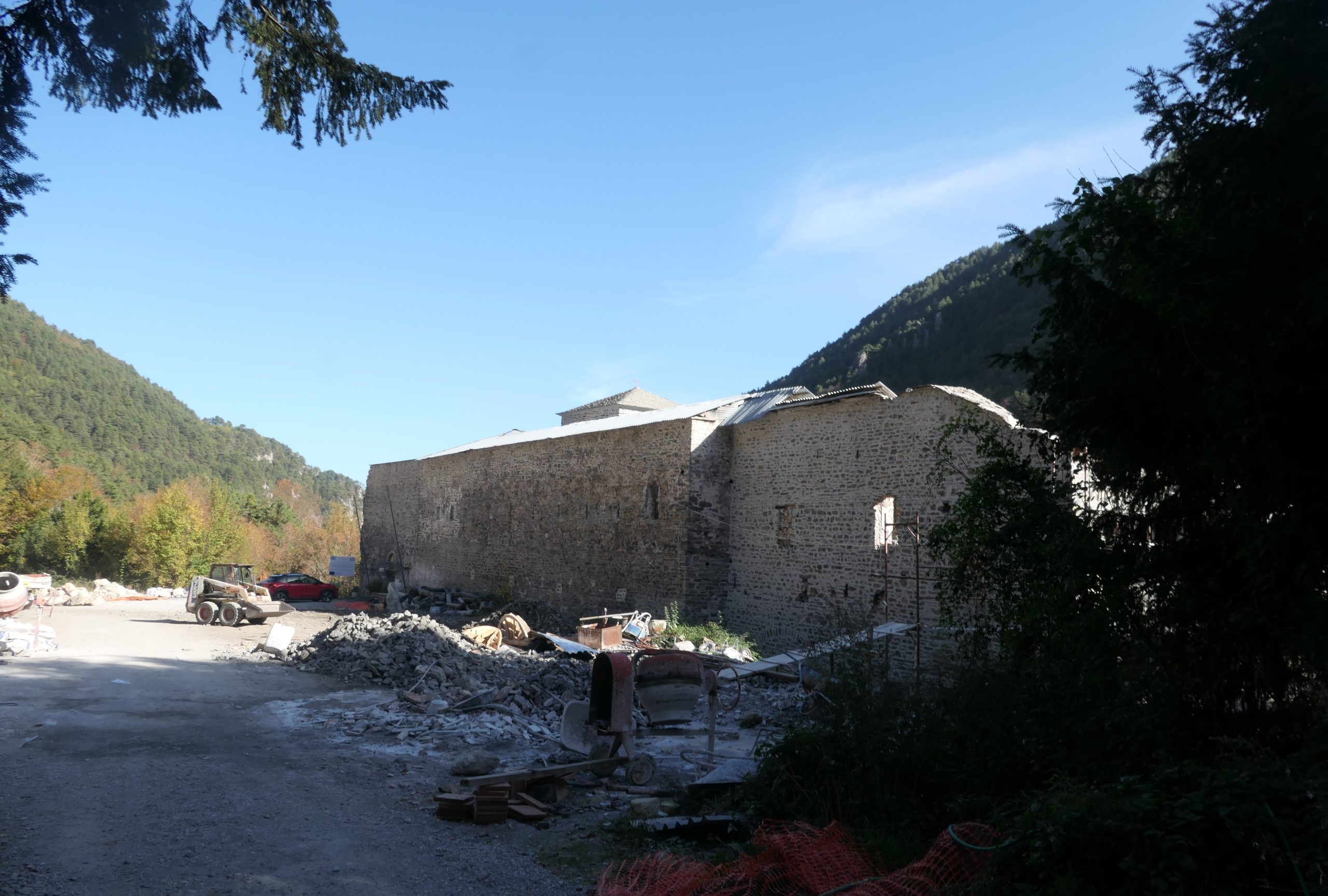
From there we needed to find the trail that the information center told us about. We went one way looking for the trail to the waterfall, and then returned towards our car, because it became obvious to us that this was not the correct way. It was disappointing that the trails were not better signposted. There was an arrow on the sign in the parking lot to the cave, so we decided to follow that. It was a steep downhill climb leading to a trail.
Towards the bottom, we met two German girls, who had come from the direction of the waterfall. When we asked if this was the way to the waterfall, they said yes, but it is far away and the trail is not flat, but very up and down. They suggested we go in the other direction, to the bridge with the spring instead. Being stubborn, we stuck to our original plan, and headed towards the waterfall. After 30 minutes of hiking almost all uphill, we turned around, and headed back to the monastery. This was not the easy, flat 15-minute hike we were told.
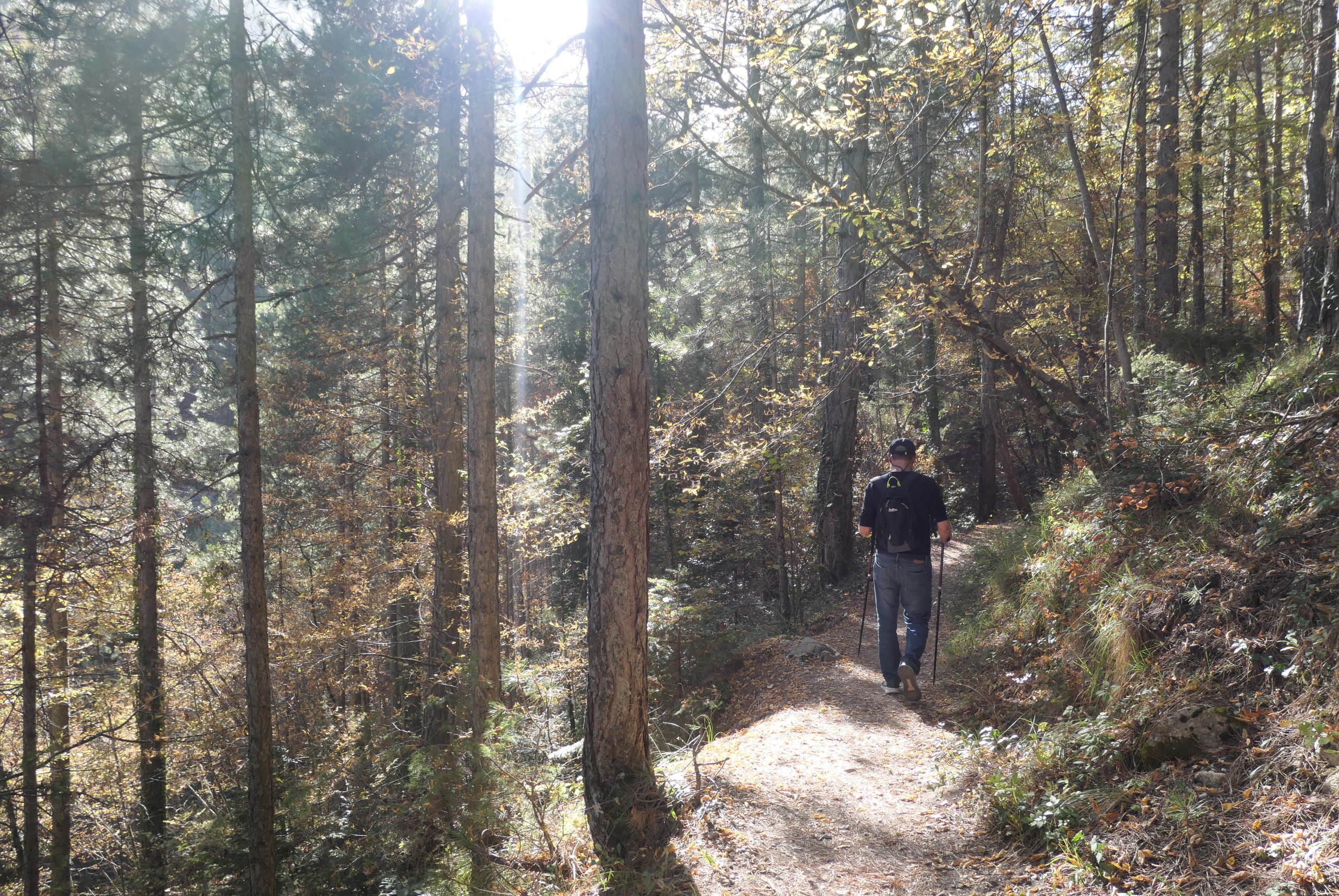
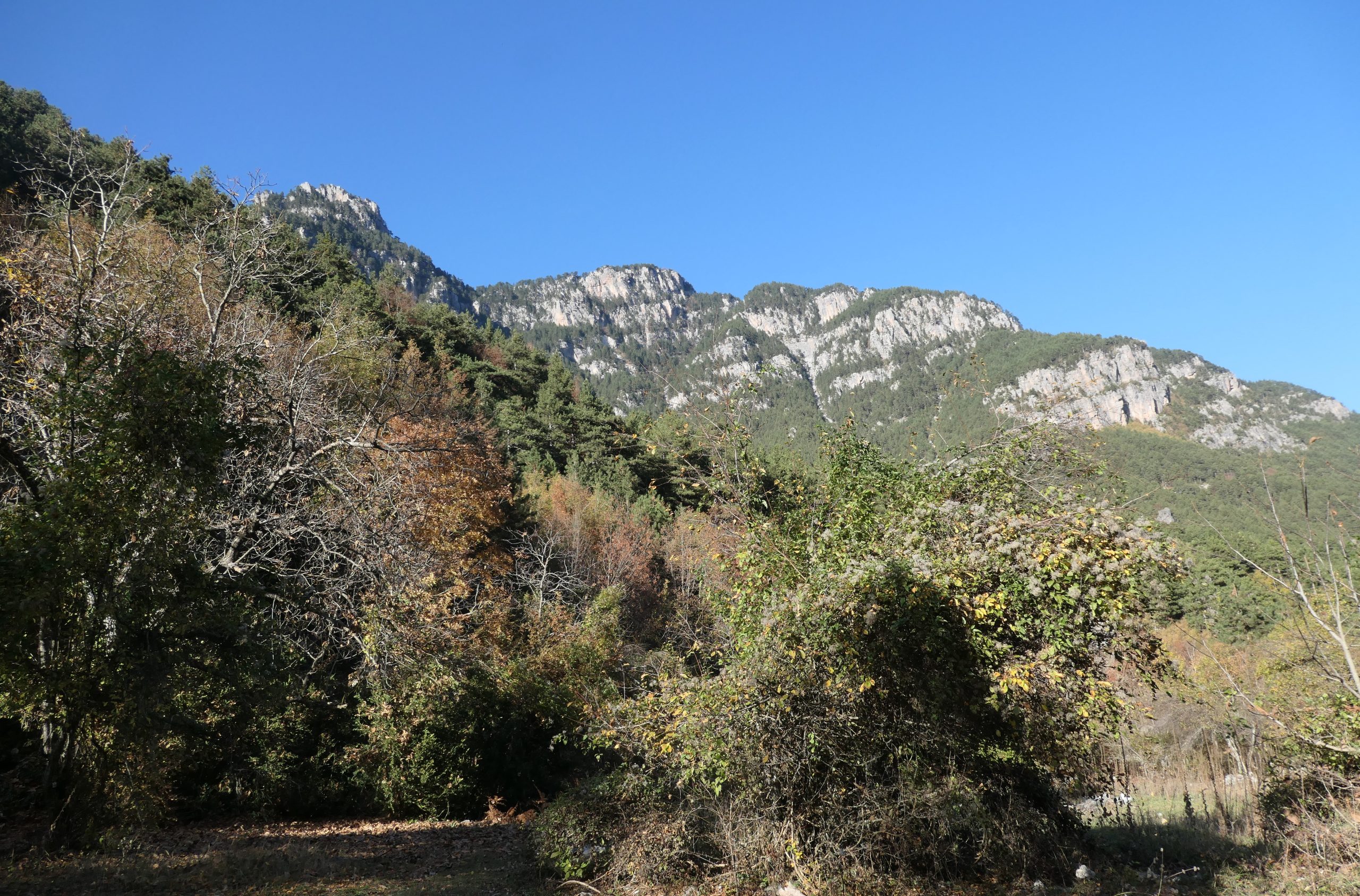
Return to the monastery was much easier, mostly downhill. When we got there we decided to keep on going to the cave. This was all steep downhill. The path was covered with leaves, that covered slippery rocks. In some areas, the path was wet with spring water and our shoes got soaked. It was not easy going, but thank goodness for hiking poles.
We made it to the bridge and the spring, Like the girls said, it really was very beautiful, with crystal clear water. We continued towards the cave, but the path went further and further downhill. Knowing we would need to climb this to return, we did not go much further. We found a different path back to the monastery – a long uphill climb, but at least dry all the way.
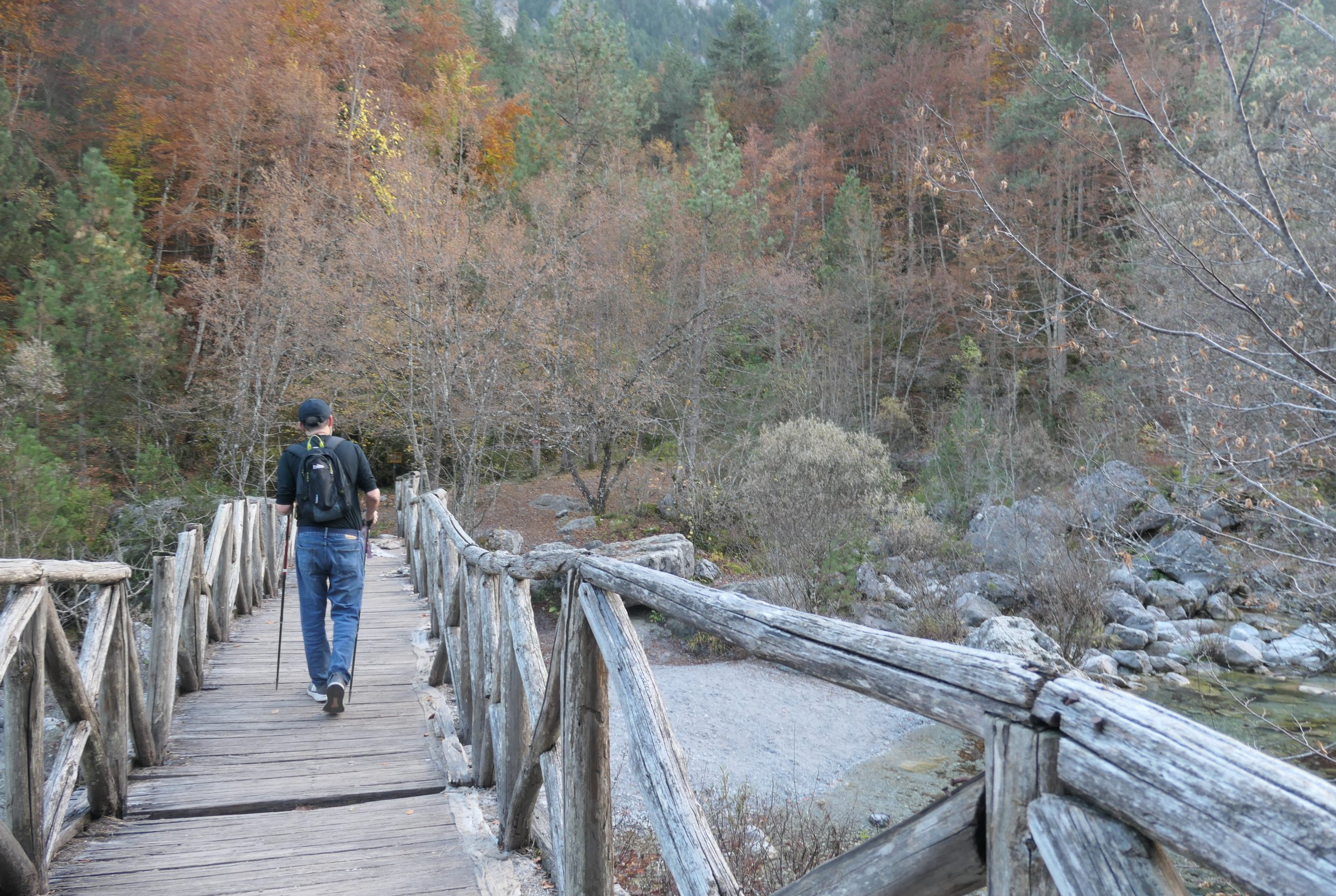
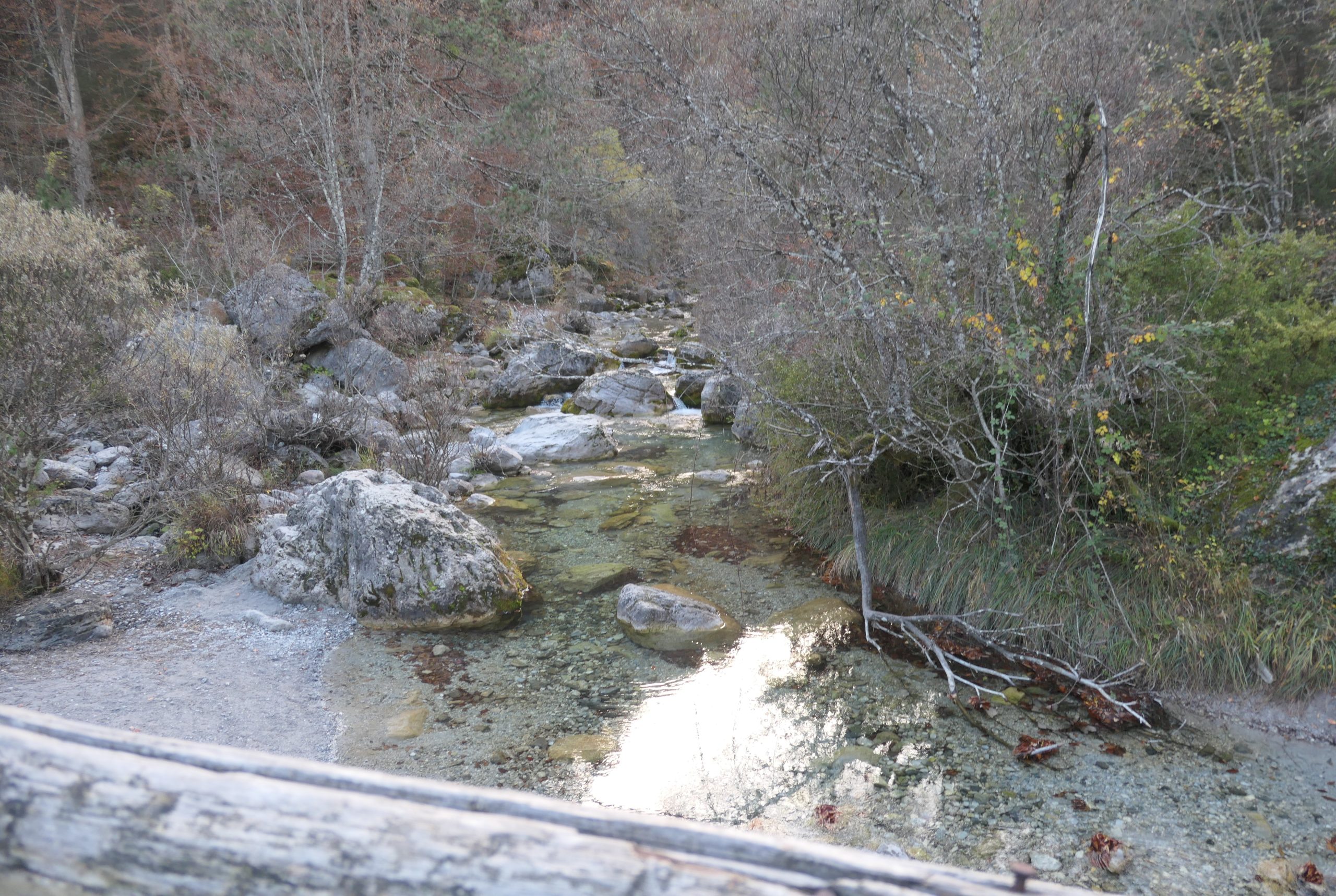
Now the door to the monastery was open and I had a peak. Beautiful!
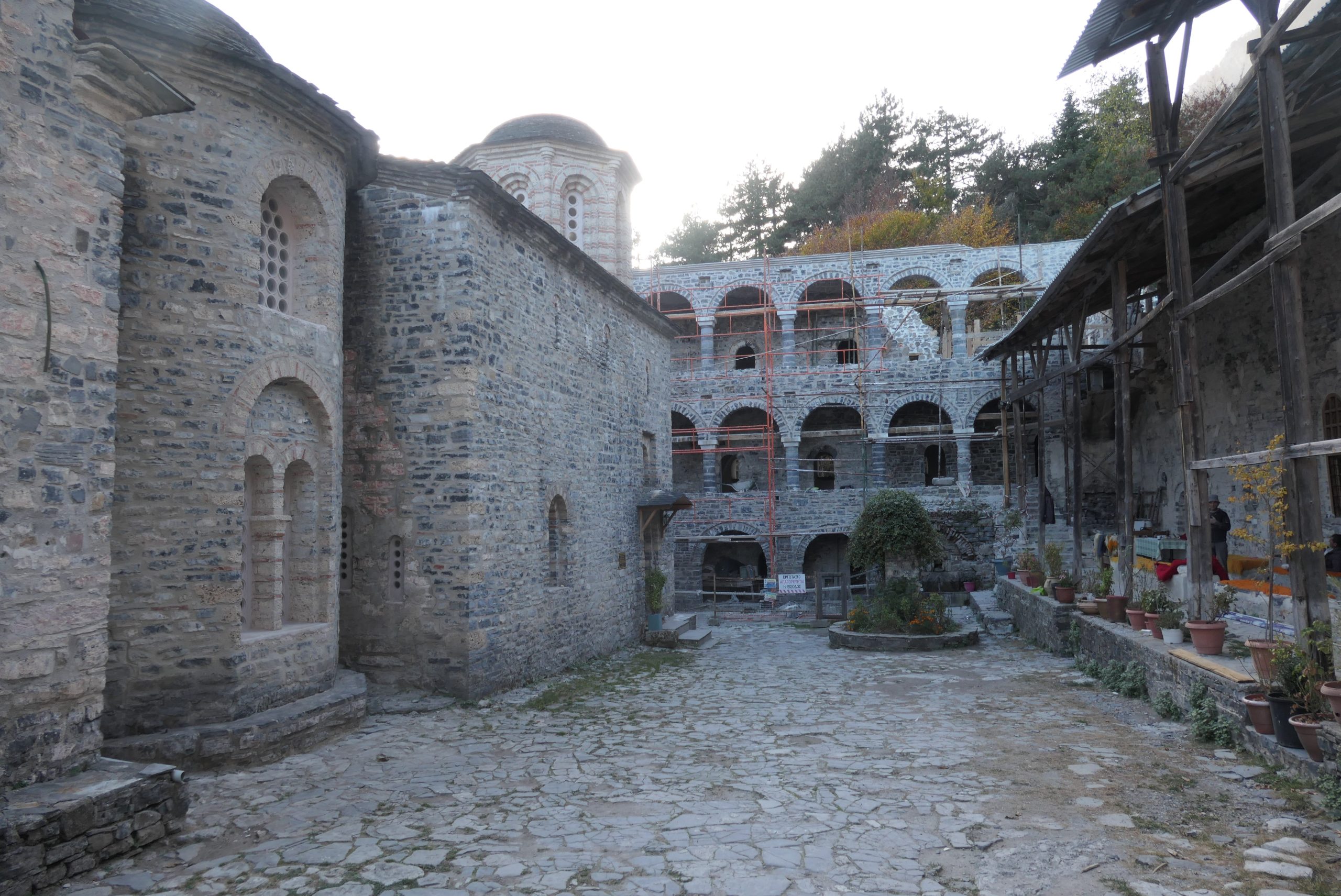

The monastery was founded in 1542 by Agios Dionysios, a monk who lived in a nearby cave. It was a hiding place of resistance fighters during the German occupation and was blown up by the Nazis in 1941. In 1943 it was bombarded and almost destroyed. Today a large number of the buildings have been restored. Considering the monastery now was a large construction site, the restoration work seems to still be a work in progress.
We slowly drove back down the mountain to Litochoro where our apartment for the night was located.

Once again, we had a bit of trouble finding it – the GPS coordinates took us to the house next door, and the neighbor thought we wanted to rent a room at his place. A phone call to our host, cleared up the situation.
We really appreciated the warm weather, especially knowing it will not last. Next week, rain is predicated for most of the days.
As usual, Mark made dinner and I worked on blogs. We then caught up on Israel’s election news and collapsed to sleep.
Searching for Wandering Jew sites and seeing only the remnants of the vibrant Jewish communities that once were in Greece and knowing what happened to them, can leave a damper on your mood. Today, being out in nature, was pure joy.
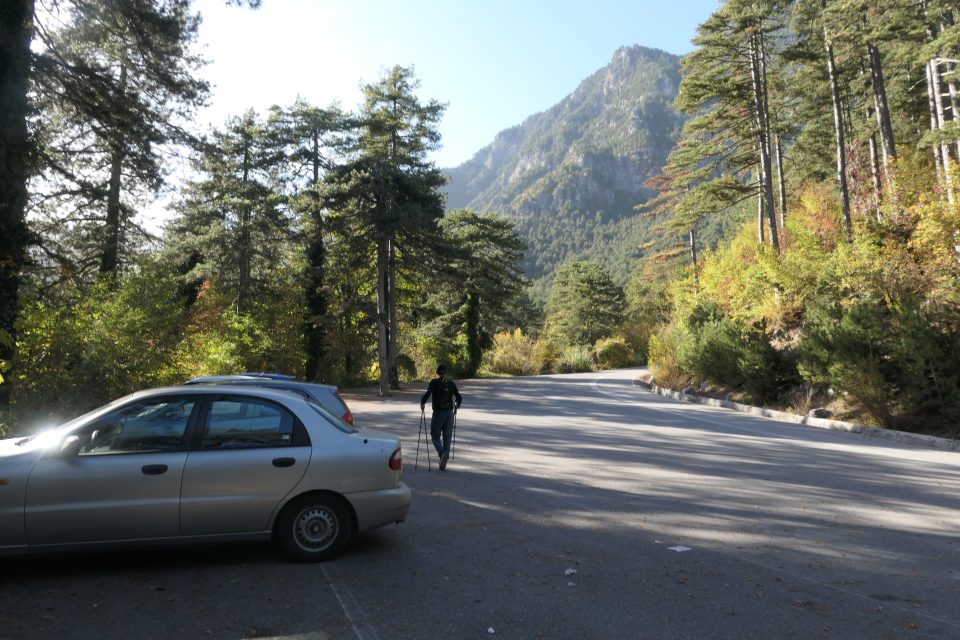
I think this inspired the story of sleeping beauty with the 13 fairies